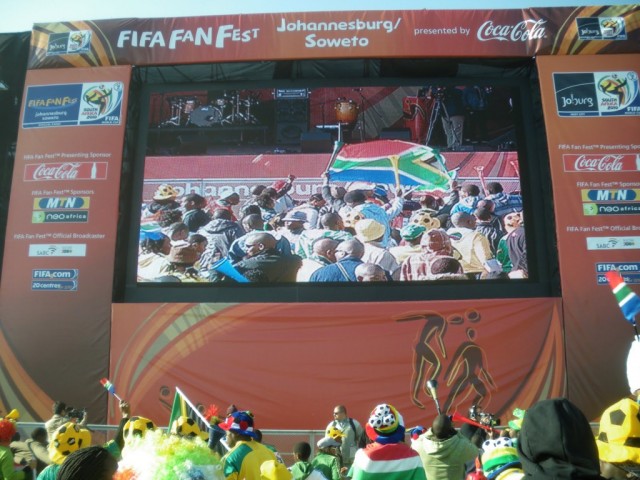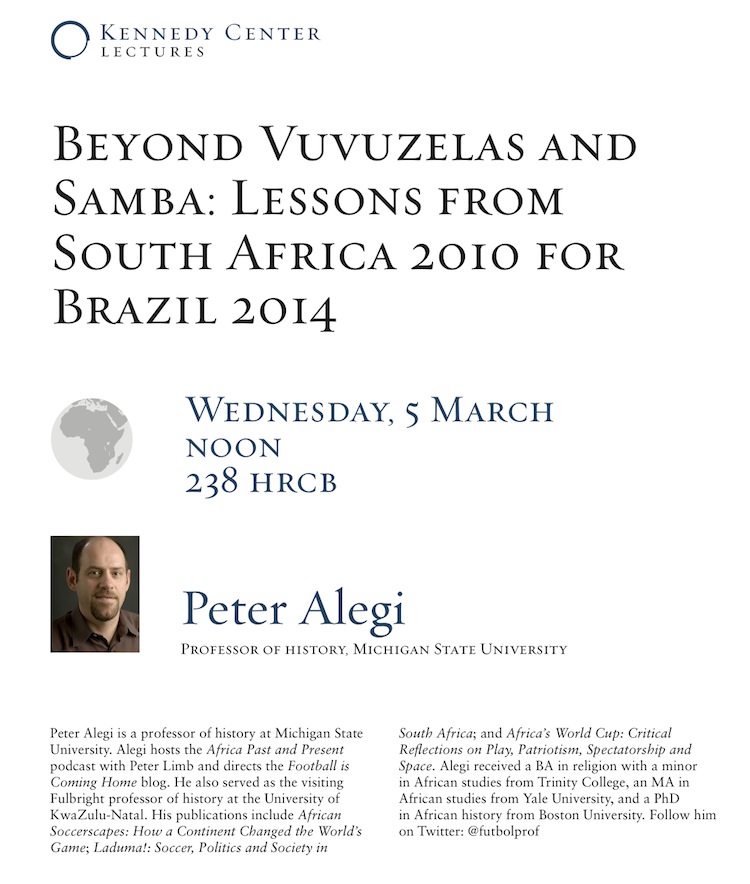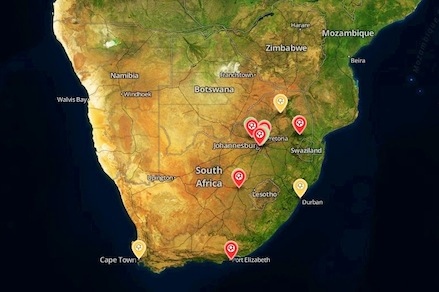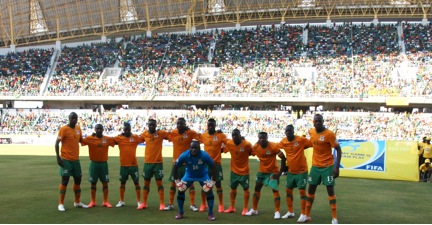
Quinton Fortune played seven seasons with Manchester United and 46 times for South Africa. On September 23, he wrote an excellent piece in The Guardian about a topic dear to me and to many readers of this blog: the impact of the 2010 World Cup on the growth and development of South African football.
Given the billions of rands spent on new and revamped stadiums and transport infrastructure, Fortune asks, was hosting the tournament a boon for the local game? “Judging by the poor attendances at top-flight games not involving the country’s two most popular clubs, Kaizer Chiefs and Orlando Pirates, who are also by far the most powerful in financial terms, and the poor performances of the national team Bafana Bafana, the answer unfortunately has to be a resounding ‘no’,” Fortune writes.
His concerns are numerous, important, and inter-related. The World Cup, Fortune asserts, did nothing to alter the Chiefs-Pirates duopoly, which continues to capture the lion’s share of the attention from fans, media, and sponsorship money. He points out that the quality of play in the Premier Soccer League is not terribly good, as evidenced by last year’s top scorer, Bernard Parker, boasting a meager 10 goals.
Fortune then notes how the swanky World Cup stadiums in Cape Town, Nelspruit, Polokwane, and Port Elizabeth are now massive financial drains on local municipalities struggling to deal with many pressing social needs in perhaps the most unequal country in the world.
The former Man United midfielder does not spare the PSL’s satellite broadcaster, SuperSport, which bankrolls the South African league while offering 24/7 matches and highlights of European football (such as EPL, La Liga, Serie A, Champions League). This contradiction is another reason why the PSL is “losing fans who prefer to watch the football from the comfort of their homes, receiving high definition pictures, while also having a choice of watching (better quality) football from other parts of the world,” says Fortune.
The way forward, Fortune concludes, requires harnessing South Africa’s world-class infrastructure and abundance of football talent to forge “a well-planned development programme which will develop that talent into realising its full potential.” How this should be done is the challenging part.



